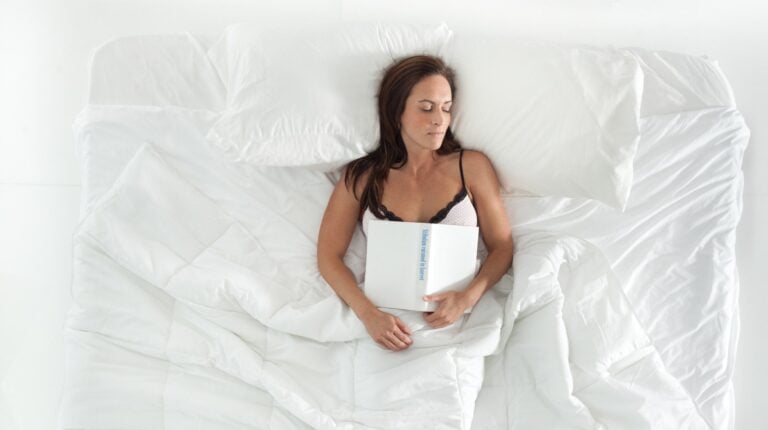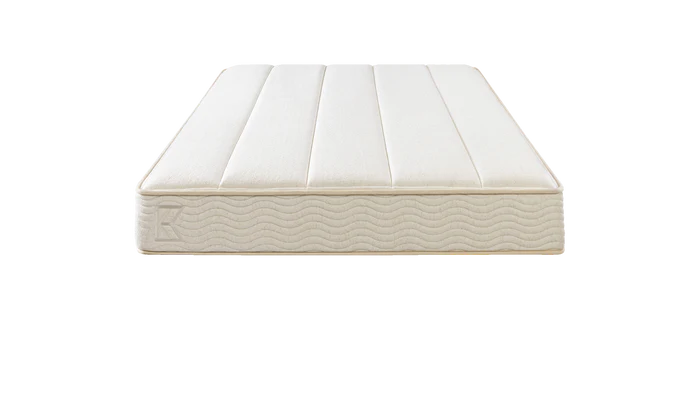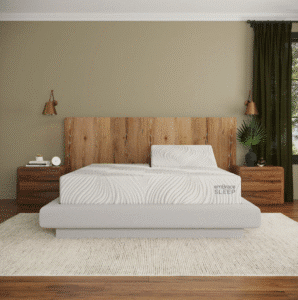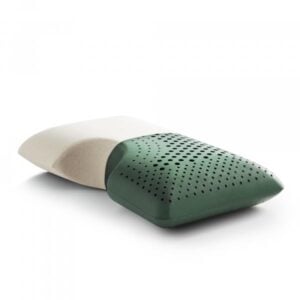Adopting a new sleep position, like sleeping on your back, can be a great way to improve your overall sleep quality and health. Back sleeping is often recommended for alleviating certain types of pain and preventing wrinkles. However, it can seem a daunting task if you’re habitually a side or stomach sleeper. Here are a few steps to guide you towards comfortably sleeping on your back.
1. Invest in the Right Equipment
Quality, supportive pillows and mattresses are key when it comes to adopting a new sleep position. Opt for a firm, supportive mattress that contours to the natural curvature of your spine. A pillow that supports your neck without elevating your head too much will also help. Remember, comfort is subjective, so trial different options to see what works best for you.
2. Position Yourself Correctly
Start by lying flat on your back, with your legs extended and your arms down by your sides. Avoid crossing your arms or legs, as this can lead to discomfort and restless sleep. Place a small, rolled towel under your knees to maintain the natural curve of your spine and relieve any pressure. Your neck and lower back should be comfortable and not strained.
3. Build a Pillow Barricade
If you find yourself constantly rolling onto your side during the night, try building a pillow barricade around your body. Surrounding yourself with pillows can act as a gentle reminder to stay on your back when you’re half asleep.
4. Practice a Regular Sleep Schedule
A consistent sleep schedule can enhance your overall sleep quality and make it easier to adjust to a new sleep position. Aim for 7-9 hours of sleep each night and try to go to bed and wake up at the same time each day.
5. Adopt Relaxation Techniques
Before bedtime, practice relaxation techniques to help your body get ready for sleep. Deep breathing, progressive muscle relaxation, or even a warm bath can help prepare your body for sleep. The more relaxed you are before bed, the easier it will be to fall asleep on your back.
6. Be Patient and Consistent
Shifting your sleep position isn’t an overnight change. It can take time for your body to adjust and feel comfortable. Be patient with yourself and consistent in your efforts.
By following these steps, you’ll be on your way to a healthier sleep posture. As with any significant change, listen to your body. If back sleeping causes discomfort or exacerbates sleep problems, it might not be the right sleep position for you. Always consult with a healthcare provider if you have persistent sleep problems or if you have other health conditions, like sleep apnea, that might affect your sleep position.
Benefits of Back Sleeping
After mastering the basic steps to sleeping on your back, it’s important to understand some of the reasons behind this sleep position’s touted benefits.
Reduced Neck and Back Pain
By sleeping on your back, your spine remains in a neutral alignment which reduces the chance of experiencing neck and back pain. This position can relieve pressure points throughout your body, aiding in overall pain reduction.
Fewer Wrinkles
When you sleep on your side or stomach, your face is often pressed against the pillow, causing potential sleep lines and wrinkles over time. Back sleeping eliminates this issue, as your face remains free from any direct pressure.
Decreased Acid Reflux
For those dealing with acid reflux or GERD, back sleeping can be beneficial as it prevents stomach acid from coming back up the esophagus. Keeping your head elevated above your stomach helps keep acid reflux at bay.
Improved Overall Health
Back sleeping can improve the health of your respiratory system and reduce the risk of developing certain types of sleep disorders like sleep apnea. In this position, your head is elevated and your airway remains more open, enabling better breathing.
To conclude, although sleeping on your back might take some getting used to, it holds the potential to enhance your sleep quality and overall health. And, while it may not be the most common sleep position, its benefits make it worth considering. Always remember that individual comfort levels vary, and it is essential to choose a sleep position that allows you to rest comfortably throughout the night. If you experience persistent sleep problems or if you’re unsure about the best sleep position for you, always seek advice from a healthcare professional.
Cons of Back Sleeping
With the benefits of back sleeping illuminated, it’s equally essential to highlight certain conditions where back sleeping might not be advisable.
Sleep Apnea and Snoring
While for some, back sleeping can alleviate sleep apnea, for others it might exacerbate the condition. Back sleeping can cause the tongue to block the windpipe, leading to snoring or dangerous pauses in breathing.
Late Pregnancy
Pregnant women, especially in their third trimester, are often advised against back sleeping. This position can put pressure on the vena cava – a major vein that returns blood to the heart, potentially reducing blood flow to the fetus.
Chronic Back Pain
Despite its potential to alleviate mild back pain, for those with chronic back issues, this position may not be ideal. It could put too much pressure on the spinal cord, worsening the pain.
As we delve deeper into the nuances of sleep positions, it becomes clear that back sleeping, while beneficial for many, is not a one-size-fits-all solution. Individual health circumstances play a vital role in determining the optimal sleep position. Thus, self-awareness and professional advice are integral to optimizing your sleep posture.
Adopting a new sleep position, particularly back sleeping, requires patience and commitment. It’s a change that is not easily made but could yield significant benefits for many people. As you embark on this journey towards better sleep health, remain patient with yourself. Allow your body the time to adjust and listen to it when it signals discomfort.
Sleep, a universally necessary act, has profound impacts on our wellbeing. By optimizing our sleep position, we can influence our sleep quality and, in turn, our overall health. From reducing pain to preventing wrinkles, back sleeping offers myriad potential benefits. The journey towards successful back sleeping can be a nuanced process, but with patience and the right guidance, it is within your reach.
Final Thoughts on Back Sleeping
In conclusion, the art of back sleeping holds promise for improved sleep quality and overall health. While it may not be suitable for everyone, those without underlying conditions that contraindicate this sleep position can benefit greatly. The key lies in understanding the proper techniques, investing in supportive equipment, and being consistent in your efforts.
Remember, quality sleep is a vital component of a healthy lifestyle, and the way you position your body during sleep plays a significant role. By adopting back sleeping, you can potentially alleviate neck and back pain, reduce the risk of wrinkles, and even improve respiratory function. However, it’s crucial to be aware of any pre-existing conditions that may require alternative sleep positions.
As with any lifestyle change, it’s advisable to consult with a healthcare professional for personalized guidance. They can assess your unique circumstances and provide tailored advice. By combining their expertise with your commitment, you can pave the way for a more restful and rejuvenating sleep experience.
So, embrace the challenge of back sleeping, and let it guide you towards enhanced well-being. Make the conscious choice to prioritize your sleep health, and may your nights be filled with deep, rejuvenating slumber.


















